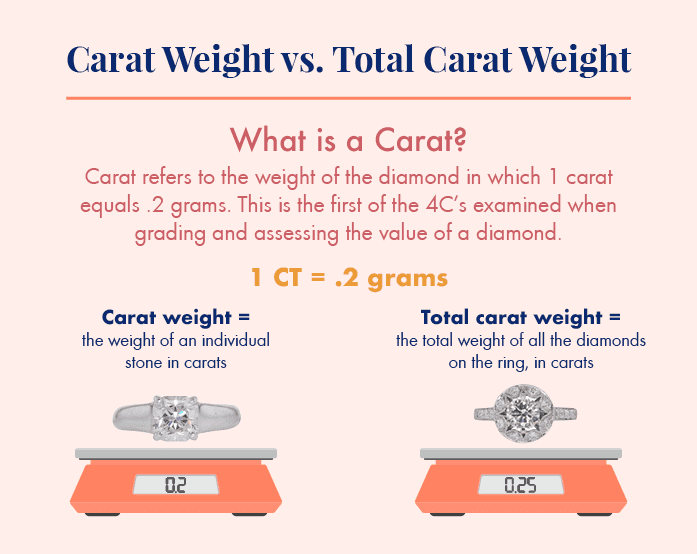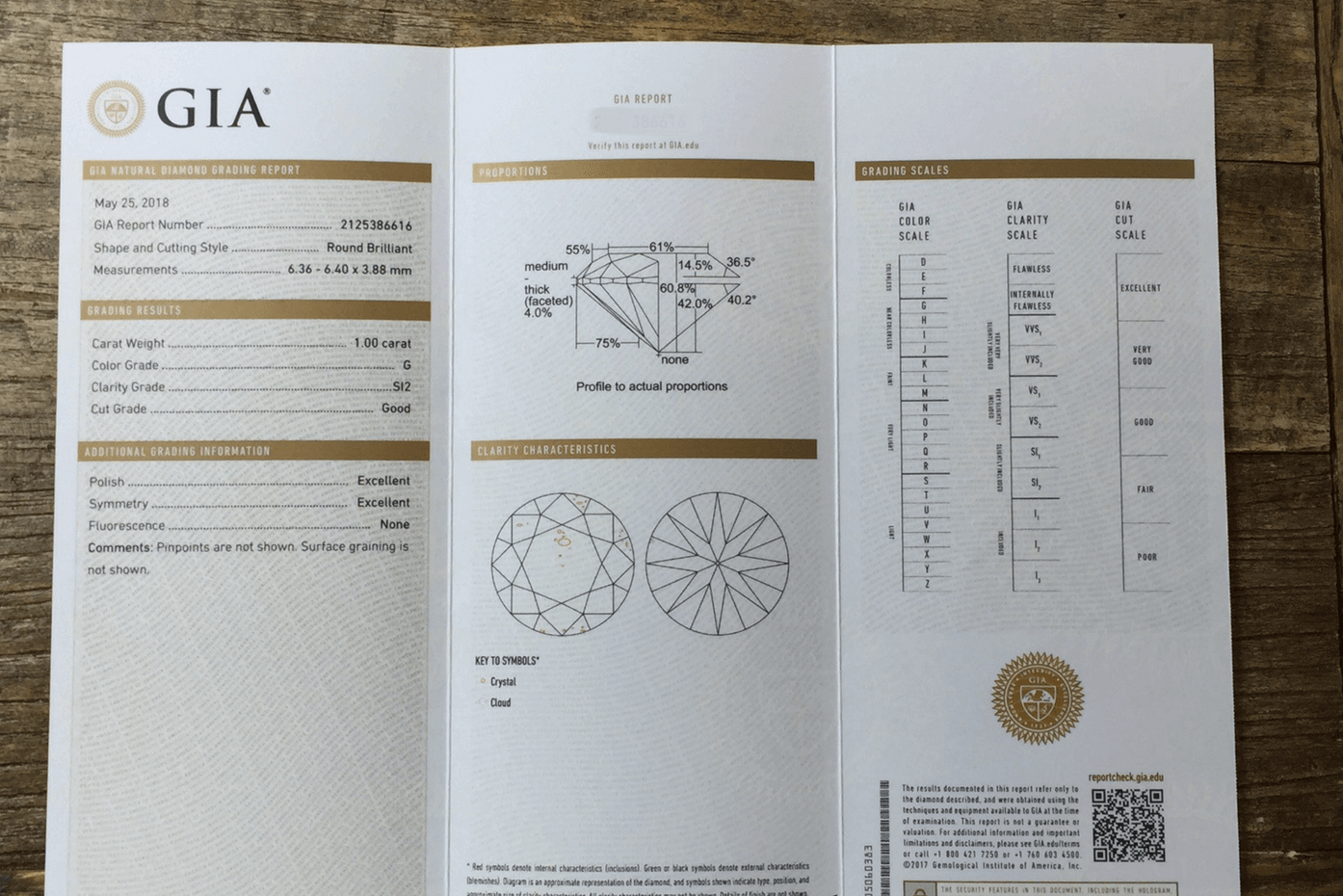
There are many factors that go into the appraisal of a diamond ring, and with the countless designs that pervade the market, it becomes necessary to evaluate each ring individually. Some have intricate filigree or an antique setting that can make grading a complicated process. Others are encrusted in diamonds that are each a fraction of a carat, and others still may be quite plain, but hold stones of impressive proportions.
When trying to determine a suitable price for a diamond ring, whether to buy or sell, one should first understand that the diamonds are what represent most of any ring’s value. These come in varied sizes, shapes and colors, and a ring might have anywhere from one to fifty stones.
Simply put, a ring with a large center stone is significantly more valuable than a ring with many small diamonds. Large, jewelry grade diamonds are more rare and are therefore more valuable. A solitaire ring with a total carat weight of 1.5 cts is more valuable than a ring made of many small diamonds with the same total carat weight.
Most price tags on jewelry are marked with total carat weight, which can be misleading. When looking to sell a diamond ring, it’s very important to understand the lingo – or risk getting a raw deal. To begin, one should familiarize themselves with the acronyms that jewelers use.
Diamond carat weight or size, is the most basic and familiar aspect of a diamond’s characteristics. Carat refers to the weight of the diamond in which 1 carat equals .2 grams. This is the first of the 4 c’s examined when grading and assessing the value of a diamond. Diamond carat weight is represented in a number of ways, including CT, CW, DW and CTW.

CW: Carat weight, meaning the weight of an individual stone in carats (1 carat is the equivalent of 0.2 grams). This is also sometimes abbreviated as DW, or “diamond weight”. Carat weight is used to describe single stones, so if you see a listing with “1CW”, you know it’s likely a single-stone ring with a 1 carat diamond.
CTW: Total carat weight, meaning the total weight of all the diamonds on the ring, in carats. It can also be abbreviated as TDW, which means “total diamond weight”. This number is just a sum and says nothing about how many stones are on the ring, or their individual sizes, so a ring labeled “1CTW” could be 4 stones of .25CW each or 10 of .10CW each.
Knowing how carat weight and total carat weight work is crucial in understanding how diamonds are priced, but without more information, it’s impossible to accurately evaluate a diamond ring. Take this scenario as an example:

Ring A has twenty 0.10CW diamonds and a total carat weight of 2.00 at $5,400. Ring B has a single 1.00CW diamond and total carat weight of 1.00 at $11,000. Why is Ring B more expensive? One may be fooled into thinking that it’s simply because a bigger center stone is more precious, but they’d only be partially correct.
Color, clarity, and cut are also factors that one should be familiar with. While not as immediately apparent as sheer size, these qualities can significantly change the price of a stone too. For instance, if your budget for a single-stone ring is $10,000, you could shop from a range of diamond sizes between 0.50CW and 2.00CW or more – but it’s likely that the biggest diamond within your budget will have inclusions, be imprecisely cut, or slightly off-color. At the end of the day, even less-than-perfect diamonds are a sight to behold, and only the customer can determine which is best for their needs.
As previously mentioned, each diamond must be graded for all of the qualities that give it value before buying or selling a diamond jewelry piece. The main stone on a diamond ring has a vital role in this process both visually and financially. As the centerpiece of a ring, it is naturally the biggest, and more importance is placed on its cut, color, and other qualities that determine price.

When shopping, one needs to understand this delicate balance and know the specific grading terms that appear on an official report from GIA or IGI. Most shoppers are unaware of the nuances present in a diamond appraisal or grading, a fact that a disreputable jeweler may take advantage of.
An appraisal isn’t complete without an objective grading. If a jeweler providing an appraisal does not properly know how to grade a diamond, they will not be able to provide you with an accurate appraisal that meets the realities of the market. Without proper equipment, it is nearly impossible to determine quality in clarity, cut or color, especially when a diamond is still mounted. The Gemological Institute of America (GIA), the International Gemology Institute and Gemological Science International (GSI) are organizations that grade diamonds in a reliable manner, and any diamond you buy or sell should be accompanied by a report from any one of these institutions.

When it comes time to sell your diamond, it is especially important to have a grading report. This is to protect both you and the buyer to prevent any foul play, and to present you as a knowledgeable seller, perhaps resulting in a better offer. If you choose Worthy to sell your diamond, not only is the grading covered, but also the auction connecting your diamond with buyers worldwide. Buyers that participate in Worthy auctions are professionals who understand the minutiae that make every diamond unique, which is exactly why we provide complimentary GIA or GSI gradings. Connect with Worthy today to turn the jewelry you no longer want into funds for your next vacation, home improvement project or wherever life takes you.
©2011-2025 Worthy, Inc. All rights reserved.
Worthy, Inc. operates from 25 West 45th St., 2nd Floor, New York, NY 10036